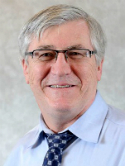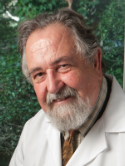| Abstract: |
Recent studies have shown increased artifacts in CT attenuation-corrected (CTAC) PET images acquired with oral contrast agents because of misclassification of contrast as bone. We have developed an algorithm, segmented contrast correction (SCC), to properly transform CT numbers in the contrast regions from CT energies (40-140 keV) to PET energy at 511 keV. Methods: A bilinear transformation, equivalent to that supplied by the PET/CT scanner manufacturer, for the conversion of linear attenuation coefficients of normal tissues from CT to PET energies was optimized for BaSO4 contrast agent. This transformation was validated by comparison with the linear attenuation coefficients measured for BaSO4 at concentrations ranging from 0% to 80% at 511 keV for PET transmission images acquired with 68Ge rod sources. In the CT images, the contrast regions were contoured to exclude bony structures and then segmented on the basis of a minimum threshold CT number (300 Hounsfield units). The CT number in each pixel identified with contrast was transformed into the corresponding effective bone CT number to produce the correct attenuation coefficient when the data were translated by the manufacturer software into PET energy during the process of CT attenuation correction. CT images were then used for attenuation correction of PET emission data. The algorithm was validated with a phantom in which a lesion was simulated within a volume of BaSO4 contrast and in the presence of a human vertebral bony structure. Regions of interest in the lesion, bone, and contrast on emission PET images reconstructed with and without the SCC algorithm were analyzed. The results were compared with those for images obtained with 68Ge-based transmission attenuation-corrected PET. Results: The SCC algorithm was able to correct for contrast artifacts in CTAC PET images. In the phantom studies, the use of SCC resulted in an approximate 32% reduction in the apparent activity concentration in the lesion compared with data obtained from PET images without SCC and a <7.6% reduction compared with data obtained from 68Ge-based attenuation-corrected PET images. In one clinical study, maximum standardized uptake value (SUVmax) measurements for the lesion, bladder, and bowel were, respectively, 14.52, 13.63, and 13.34 g/mL in CTAC PET images, 59.45, 26.71, and 37.22 g/mL in 68Ge-based attenuation-corrected PET images, and 11.05, 6.66, and 6.33 g/mL in CTAC PET images with SCC. Conclusion: Correction of oral contrast artifacts in PET images obtained by combined PET/CT yielded more accurate quantitation of the lesion and other, normal structures. The algorithm was tested in a clinical case, in which SUVmax measurements showed discrepancies of 2%, 1.3%, and 5% between 68Ge-based attenuation-corrected PET images and CTAC PET images with SCC for the lesion, bladder, and bowel, respectively. These values correspond to 6.5%, 62%, and 66% differences between CTAC-based measurements and 68Ge-based ones. |
| Keywords: |
middle aged; case report; validation process; positron emission tomography; methodology; quality control; computer assisted tomography; image analysis; image interpretation, computer-assisted; tomography, x-ray computed; validation study; algorithms; imaging system; standardization; feasibility study; correlation coefficient; statistical analysis; diagnostic agent; algorithm; computer assisted diagnosis; evaluation; image enhancement; image subtraction; instrumentation; subtraction technique; feasibility studies; image quality; computer assisted emission tomography; bone; scintiscanning; contrast medium; contrast media; radiography; artifact; phantoms, imaging; structure analysis; administration, oral; rectal neoplasms; rectum tumor; bioenergy; maximum allowable concentration; artifacts; radiation scattering; oral drug administration; tomography, emission-computed; scattering, radiation; transmission electron microscopy; reaction optimization; barium sulfate; radiation attenuation; contrast radiography; humans; human; male; priority journal; article; pet/ct contrast artifacts; germanium derivative; biolistic transformation
|







